
CHINESE JOURNAL OF LASERS-ZHONGGUO JIGUANG
Scope & Guideline
Navigating the Frontiers of Laser Applications
Introduction
Aims and Scopes
- Laser Material Processing:
Research related to the use of lasers in material processing, including additive manufacturing, welding, cladding, and surface treatment. The journal frequently publishes studies on optimizing parameters for different materials to enhance their properties. - Laser Measurement and Sensing Technologies:
This area covers advancements in laser-based measurement and sensing technologies, including LiDAR, optical coherence tomography, and laser-induced breakdown spectroscopy. The focus is on improving accuracy and efficiency in various applications. - Laser Physics and Engineering:
Investigations into the fundamental principles of laser operation, design, and engineering. Research includes novel laser configurations, frequency conversion, and the development of high-power lasers. - Biomedical Applications of Lasers:
Studies exploring the application of lasers in the biomedical field, including imaging, therapy, and diagnostics. This includes research on laser interactions with biological tissues and the development of laser-based medical devices. - Optoelectronics and Photonics:
Research on the integration of lasers with photonic devices, including sensors, detectors, and modulators. This encompasses the development of novel materials and structures for enhanced optical performance. - Nanotechnology and Laser Processing:
Exploration of the use of lasers in nanofabrication and the manipulation of nanomaterials. This includes studies on laser-induced processes for creating nanostructures and their applications in various fields.
Trending and Emerging
- Laser Additive Manufacturing:
The rise of research in laser additive manufacturing techniques, especially for metals and composites, indicates a growing interest in this technology for its potential in industries such as aerospace and automotive. - Laser-Based Sensing Technologies:
An increasing number of studies focus on the development and optimization of laser-based sensors for environmental monitoring, industrial applications, and healthcare diagnostics, showcasing the versatility and utility of laser technologies. - Integration of AI and Machine Learning with Laser Applications:
Research incorporating artificial intelligence and machine learning within laser technologies is on the rise. This trend includes optimizing laser processing parameters and enhancing imaging techniques, reflecting a broader trend in the integration of AI across various scientific fields. - Ultrafast Laser Technologies:
Significant growth in research focused on ultrafast laser applications, particularly in material processing and biomedical fields, illustrates the expanding interest in leveraging ultrafast phenomena for advanced applications. - Nanostructuring and Surface Engineering:
Emerging studies on using lasers for creating nanostructured surfaces and coatings suggest a trend towards utilizing laser technology for advanced material properties and functionalities.
Declining or Waning
- Traditional Laser Applications:
Research in traditional laser applications, such as basic laser engraving and cutting, has decreased. As industries evolve and adopt more advanced technologies, the focus has shifted towards innovative applications and integration with new materials. - Basic Laser Theory and Models:
Papers focusing solely on theoretical aspects of laser physics, lacking practical application, have become less common. Researchers are increasingly interested in applied studies that demonstrate real-world relevance. - Conventional Laser Sources:
With the rapid development of new laser technologies, research on conventional laser sources (like gas lasers) has waned, as newer solid-state and fiber lasers become more prominent in research and applications.
Similar Journals
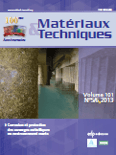
Materiaux & Techniques
Bridging Theory and Application in Material TechnologiesMateriaux & Techniques, published by EDP SCIENCES S A, is a prominent journal in the field of materials science, specifically focusing on diverse and innovative techniques in material development and application. With an ISSN of 0032-6895 and an E-ISSN of 1778-3771, this French journal serves as a key resource for researchers and professionals looking to advance their knowledge and share their findings within the community. The journal holds a Q3 ranking in Materials Science (miscellaneous), indicating its role in contributing to various facets of material science research amidst a growing field. Despite operating under a traditional access model, it provides a platform for rigorous peer-reviewed studies and significant advancements in material technology. With a publication history tracing back to the late 1970s and extending through to 2024, Materiaux & Techniques continues to uphold its commitment to fostering high-quality discourse and innovation in materials science.

Korean Journal of Optics and Photonics
Shaping Tomorrow's Technologies with LightKorean Journal of Optics and Photonics is a premier publication dedicated to advancing knowledge in the rapidly evolving fields of optics and photonics. Published by the esteemed Optical Society of Korea, this journal serves as a vital platform for researchers, professionals, and students seeking to disseminate their findings and innovations in areas such as optical engineering, photonics technologies, and application developments. Although the journal does not operate under an Open Access model, it is committed to high-quality peer-reviewed research that contributes significantly to both theoretical and practical advancements in the field. With an increasing focus on interdisciplinary research, the Korean Journal of Optics and Photonics is poised to play a crucial role in fostering collaboration and driving the global conversation on light science and technology. The journal's ISSN is 1225-6285 and it also carries the E-ISSN 2287-321X, ensuring its availability to a wide readership.
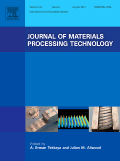
JOURNAL OF MATERIALS PROCESSING TECHNOLOGY
Shaping the Landscape of Manufacturing InnovationJOURNAL OF MATERIALS PROCESSING TECHNOLOGY, published by ELSEVIER SCIENCE SA, is a premier international journal dedicated to the dissemination of cutting-edge research in the field of materials processing. With an impact factor indicative of its high academic quality, this journal features a diverse range of topics, including ceramics, composites, metals, and manufacturing technologies, thereby inspiring innovations within its community. As a recognized Q1 journal across multiple categories—including Ceramics and Composites, Computer Science Applications, Industrial and Manufacturing Engineering, and Modeling and Simulation— it ranks among the top in its field. The journal's rigorous peer-review process ensures the publication of only the most significant and relevant studies, supporting researchers, professionals, and students in advancing their knowledge and expertise. With its commitment to excellence, the JOURNAL OF MATERIALS PROCESSING TECHNOLOGY remains a vital resource for those aiming to push the boundaries of materials science and engineering.
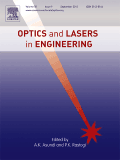
OPTICS AND LASERS IN ENGINEERING
Shaping the Future of Engineering with Optical PrecisionOPTICS AND LASERS IN ENGINEERING, published by Elsevier Science Ltd, is a premier journal dedicated to advancing the field of optics and laser technology in engineering applications. With a robust ISSN of 0143-8166 and E-ISSN 1873-0302, this journal is positioned within the top quartile (Q1) across several categories, including Atomic and Molecular Physics, Electrical Engineering, and Mechanical Engineering as of 2023, showcasing its prestige and impact in the scientific community. The journal has consistently ranked high in Scopus, notably within the top 10% for Mechanical Engineering and Electronic, Optical, and Magnetic Materials research. Since its inception in 1980, OPTICS AND LASERS IN ENGINEERING has served as a vital platform for disseminating cutting-edge research, fostering innovation and collaboration among researchers, professionals, and academia. Though it does not currently offer Open Access options, its high impact factor and selective publication process ensure that articles reach a wide audience while maintaining rigorous academic standards. Researchers and students alike are encouraged to engage with this influential journal to contribute to and stay abreast of advancements in optical technologies and their engineering applications.
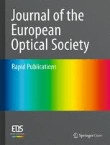
Journal of the European Optical Society-Rapid Publications
Bridging Ideas with Speed in Optical ResearchJournal of the European Optical Society-Rapid Publications, with ISSN 1990-2573 and published by EDP Sciences S A, is a premier open access journal dedicated to advancing the field of optics and photonics since its inception in 2006. Based in France, this journal serves as a vibrant platform for researchers, professionals, and students to disseminate their findings quickly and efficiently. Achieving a commendable Q3 ranking in Atomic and Molecular Physics and Optics (2023), it reflects a growing impact within the scientific community, despite currently holding a 33rd percentile rank among similar publications in the realm of Physics and Astronomy. The journal fosters an environment of rapid communication and collaboration, making it an invaluable resource for those interested in the latest developments and innovations in optical sciences. With open access ensuring broad visibility for all published work, the Journal of the European Optical Society-Rapid Publications is positioned as a key contributor to enhancing the understanding and application of optical technologies.

Journal of Optics-India
Empowering Scholars to Transform Optical ScienceThe Journal of Optics-India, published by SPRINGER INDIA, serves as a vital platform dedicated to advancing research in the field of optics, focusing on topics in both atomic and molecular physics. With an ISSN of 0972-8821 and an E-ISSN of 0974-6900, the journal has been a consistent contributor to the field since its inception in 1996 and continues to thrive with its anticipated convergence through 2024. Although currently classified in Q3 of the 2023 category quartiles, the journal actively seeks to elevate its standing within Scopus rankings in physics and astronomy, where it holds a rank of 143/224, indicating significant opportunities for growth and research impact. The Journal of Optics-India is committed to fostering innovative research and providing scholars and practitioners with access to cutting-edge findings, thereby enhancing global conversations around optics and its vast applications. As a reliable source for researchers, professionals, and students alike, the journal emphasizes quality contributions that shape the future of optical science.

Photonics, an esteemed journal published by MDPI, is a leading platform for researchers in the fields of atomic and molecular physics, optics, and instrumentation. Since its inception in 2014, the journal has fostered open access to cutting-edge research, facilitating knowledge dissemination in these dynamic disciplines. With its Q2 ranking in the 2023 Scopus metrics for various categories, including radiology, nuclear medicine, and imaging, Photonics represents a crucial academic resource for professionals and students seeking to advance their understanding and expertise. Located in Basel, Switzerland, the journal plays a pivotal role in bridging theoretical and practical approaches to photonic technologies. Researchers are encouraged to contribute their findings, thereby enriching the journal’s impact and relevance in the global scientific community through collaboration and innovation.

APPLIED PHYSICS B-LASERS AND OPTICS
Shaping the Landscape of Optical ScienceApplied Physics B - Lasers and Optics, published by Springer Heidelberg, is a renowned journal in the field of applied physics, particularly focusing on lasers and optical technologies. With a solid impact factor, this journal has established itself as a significant source of cutting-edge research, contributing to advancements in both theoretical and practical aspects of the discipline. The journal is indexed in Scopus, boasting a commendable rank of #24 out of 81 in the category of Physics and Astronomy (miscellaneous), reflecting its reputation and the quality of published work. Since its inception in 1994, Applied Physics B has covered a wide array of topics, catering to researchers, professionals, and students engaged in the exploration of innovative optical phenomena and laser applications. This journal not only disseminates vital knowledge but also fosters interdisciplinary collaboration, making it an essential resource for those seeking to stay at the forefront of research in lasers and optics.
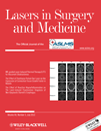
LASERS IN SURGERY AND MEDICINE
Illuminating the future of surgery with cutting-edge research.LASERS IN SURGERY AND MEDICINE, published by Wiley, is a premier peer-reviewed journal dedicated to advancing the field of laser technology in surgical and medical applications. With an impactful contribution to research since its inception in 1980, this journal has maintained a strong presence in high-impact categories, achieving Q1 status in both Dermatology and Surgery as of 2023. The journal is highly regarded, ranking #69 out of 551 in Medicine—Surgery and #21 out of 142 in Medicine—Dermatology within Scopus, indicating its significant influence in shaping contemporary surgical practices. Although it does not currently offer open access, subscribers and institutions can access a wealth of knowledge through its rigorous publication standards and high-quality research articles. Perfect for researchers, professionals, and students, LASERS IN SURGERY AND MEDICINE is an essential resource for those looking to stay at the forefront of innovations in laser applications across various medical fields.
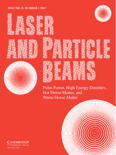
LASER AND PARTICLE BEAMS
Bridging Theory and Practice in Particle Beam ResearchLASER AND PARTICLE BEAMS is a distinguished peer-reviewed journal published by Hindawi Ltd, specifically focusing on the fields of atomic and molecular physics, optics, condensed matter physics, and electrical and electronic engineering. With its commitment to advancing knowledge in these areas, the journal has transitioned to an Open Access model since 2021, ensuring that research findings are readily accessible to the global scientific community. Covering an extensive publication history from 1983 to 2023, it serves as an important platform for researchers, professionals, and students interested in the latest developments and applications of laser technologies and particle beam methodologies. Although currently categorized in Q4 for two of its areas and Q3 for electrical engineering in the 2023 base metrics, LASER AND PARTICLE BEAMS is positioned to foster innovative research and discussions within the laboratory and applied settings, contributing significantly to advancements in its respective disciplines. The journal encourages contributions that push the boundaries of knowledge and seeks to attract a diverse array of submissions to enhance its impact in the scientific community.